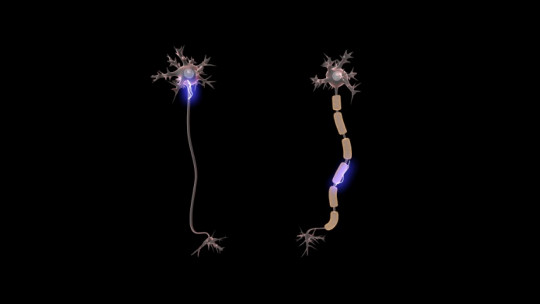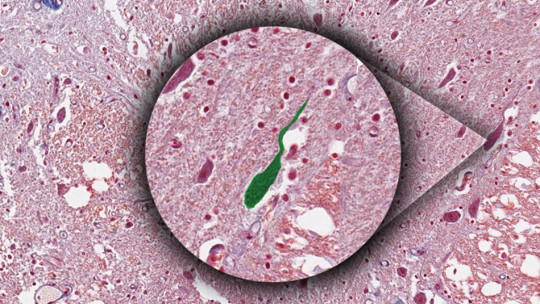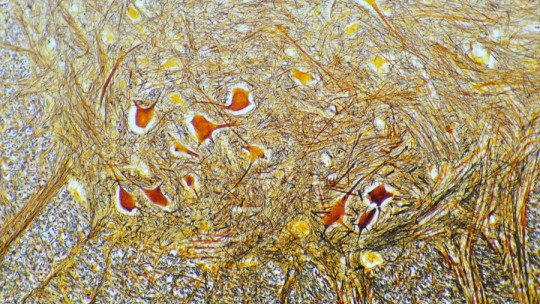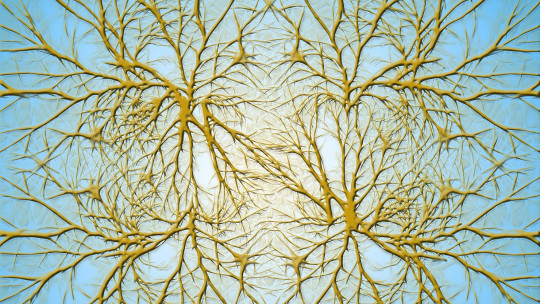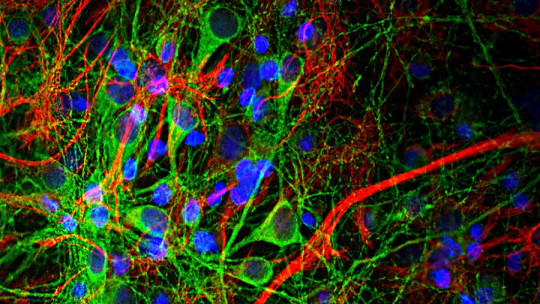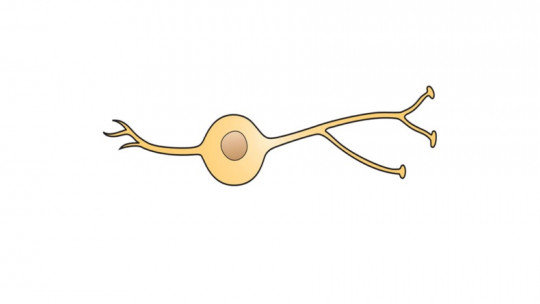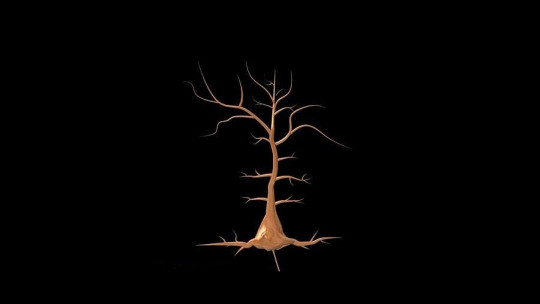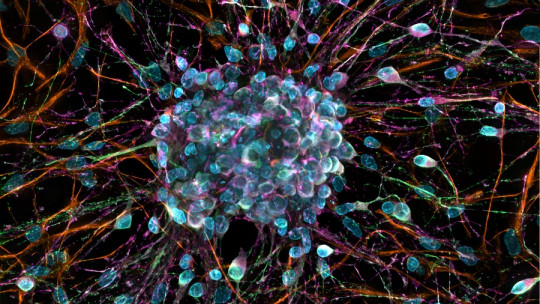On numerous occasions we have talked about the nervous system, the cells that make it up, their functions and what happens when they do not function correctly. Now, what makes up the neuronal cells that inhabit the nervous system?
Throughout this article we will talk about the different parts of neurons as well as their main characteristics and the functions that each of them possess and that make possible the transmission of information throughout the entire nervous system.
What is a neuron?
The neurons are small cells that live in our nervous system and that are responsible for activating or inhibiting its electrical activity. Its main function is to receive electrical stimuli and conduct them to other neurons. This electrical stimulus or reaction is known as an action potential.
Therefore, neurons send an infinite amount of action potentials between them that make the functioning of our nervous system possible, thanks to which we can move our muscles, feel pain or even dream.
It is estimated that there are around 86 billion neurons in our brain alone. However, at the time of our birth there may be more than 100 billion. The reason for this decrease in number is that over the years our brain ages and the number of neurons begins to decrease.
However, this does not mean that our neurons can only die. In our daily lives, not only the degeneration of neurons occurs, but also their regeneration.
It is currently believed that Our brain is in constant neuronal regeneration Thanks to the process known as neurogenesis, the creation of new neurons and new neuronal connections occurs. Furthermore, some studies assure that, especially during childhood, we can enhance this birth of new neurons through a series of exercises and activities that exercise our brain.
Main parts of the neuron
As mentioned above, the neuron constitutes the functional and structural unit not only of our brain, but of the entire nervous system. These are made up of different parts, each one with specific characteristics and specific functions
These parts are known as soma or cell body, dendrites and axon.
1. Soma or cell body
The first part we will talk about is the soma or cell body. As its name indicates, the soma constitutes the center of the neuron, and This is where the metabolic activity of this organism takes place
In the soma, new molecules are generated and all types of essential functions are carried out that make possible the vital maintenance of the cell and its functions.
In order to carry out these functions and achieve the transmission of information between neurons, each of them must produce enormous amounts of protein without which this transmission would not be possible.
Furthermore, within the cell body we can find some organelles also present in other types of cells such as lysosomes and mitochondria, the Golgi apparatus or the chromosomes themselves that define our genetics. All of this is located in the cytoplasm, which constitutes the soma of the neuron.
Finally, within the neuronal cytoplasm also fibrillar proteins are found, which form the cytoskeleton This cytoskeleton is what gives shape to the neuron and provides a mechanism for the transport of molecules.
2. Dendrites
Another part that makes up neurons is the dendrites. This name refers to the numerous extensions in the form of small branches that arise from the neuronal body and whose main functions are to receive stimuli and provide food to the cell.
These extensions function as neuronal terminals, which receive action potentials from other nearby neurons and redirect them to the cell body or soma. Furthermore, due to its branched shape, along these we find dendritic spines, small spines in which synapses occur that make possible the transmission of bioelectric impulses
3. Axon
Finally, the axon constitutes the main extension of the neuron (and the largest). It is responsible for transporting the action potential from the cell body to another neuron
This long extension arises from the cell body or, in some cases, from a dendrite. Inside we can find the axoplasm, a characteristically viscous substance in which the different neuron organisms are found.
One of the main characteristics of these axons is that They may be covered with a layer known as a myelin sheath which can enhance or facilitate the speed with which action potentials or electrical stimuli are transmitted.
Furthermore, neurons can be classified into different types according to the length of the axon: Golgi type I and type II neurons, or according to their shape: pyramidal cells of the cerebral cortex and Purkinje cells.
4. Other neural elements
In addition to the main parts of the neuron described above, there are other particles or sections of great importance for their correct functioning. Some of these parts are:
Schwann cells
Also known as neurolemocytes, these cells they cover the axons of neurons in the peripheral nervous system and myelin sheaths form them.
myelin sheaths
As mentioned above, some axons have a myelin sheath that facilitates the transmission of electrical stimuli over long distances
Ranvier’s nodes
This concept refers to the tiny spaces found in the myelin sheath and its main purpose is to enhance the speed with which electrical impulses are transmitted.

